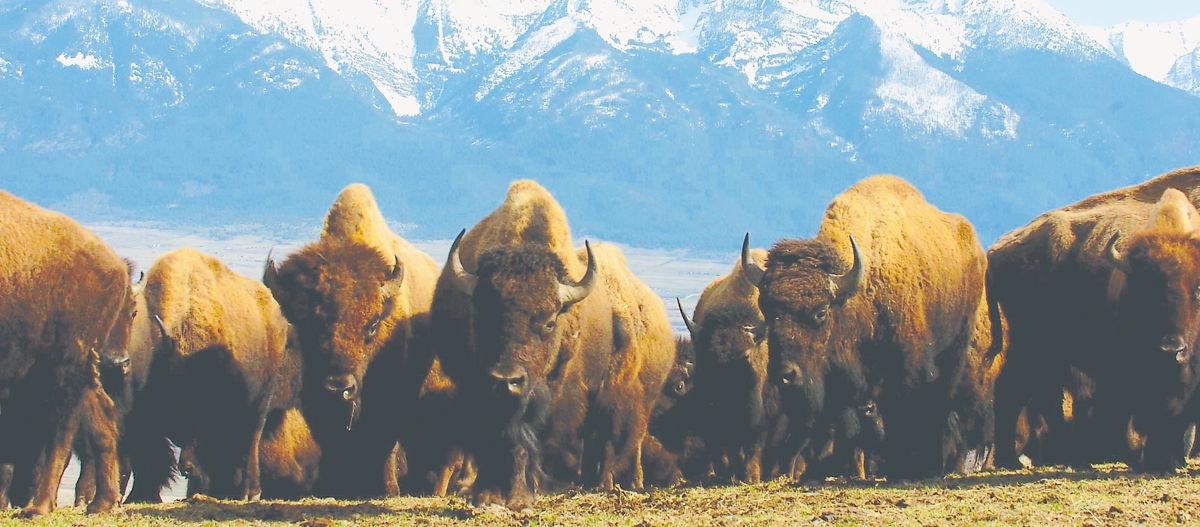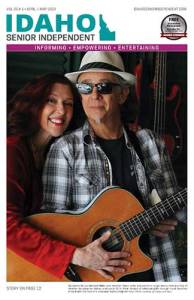An estimated 30 to 60 million Bison used to roam North America—but market hunting brought about by the settling of the West quickly turned that iconic animal into an endangered species.
By the late 1800’s only a hundred wild bison were estimated to have survived the wholesale slaughter. But outdoorsman and avid conservationist President Teddy Roosevelt was determined to intervene in the buffalo’s desperate situation.
In 1908, the National Bison Range in Montana was established, and for the first time, Congress voted to provide money to buy land in order to protect and conserve wildlife. The original herd was purchased with money provided by the American Bison Society from ranchers who had small, private herds. Today, the herd, which fluctuates between 250-300 animals, is healthy and managed for genetic diversity and a range of ages.
Tipping the scales at 2,000 pounds, bison are a majestic sight to behold. Seeing these animals—immortalized on the buffalo five-cent piece—roaming free is a uniquely American experience.
According to Amy Lisk, a wildlife biologist who has worked at the Range for 18 years, the animals are rounded up annually as part of the management plan.
“We do this to assess the overall health of the herd through a random sample of animals, to check for pathogens and to maintain our population target,” explained Lisk.
The number of bison the Range can hold depends on fluctuations in habitat production, which may affect the health of the herd. Females typically give birth to one calf from mid-April to May, so assessing numbers is pretty easy.
In years when the range forage production is lower, some animals over the age of four may be sold or donated, to keep the herd in balance with its environment. The bison remain in as natural a setting as possible within the confines of the Range.
While bison are the big draw for visitors to the range, Lisk said the opportunity to see other wildlife abounds just by taking the auto tour routes through the reserve.
Visitors frequently see elk, deer, bighorn sheep, and pronghorn antelope, but they should bring binoculars along to enhance their experience.
“Early in the morning or later in the day (the Range is open 6 am to 9 pm) are the best time for wildlife viewing. Bison and elk tend to frequent the grassland areas most,” Lisk said. “Spending time to drive slowly along the riparian areas in the Range will also provide an opportunity to see an array of wildlife, including plenty of bird species.”
In fact, Congress established the Range as a native bird refuge in 1921. More than 211 bird species have been documented here. One can see everything on the range from resident birds, like great horned owls, to migratory songbirds, like mountain bluebirds and western meadowlarks.
August is prime time to see bison in the rut. “Bison get very vocal, and bulls mix it up a lot then,” said Lisk. “They also spend a lot of time rolling and dusting themselves, and more of the herd is together, so there’s more social interaction.”
September brings cow elk into season, with bulls bugling to announce their presence and ability to challenge other bulls for the right to breed a harem of cows. If you’ve never heard a bull elk bugle, you owe it to yourself to get to the Range in September, to hear a sound that will send chills down your spine.
Lisk recommended visitors take the time to drive both of the auto tour routes. Prairie Drive runs along the north side of the reserve while the Red Sleep Drive winds over the main ridge in the refuge.
“This drive tops out at 4,800 feet,” said Lisk. “When you descend down to 2,500 feet in elevation, you go through different forest ecosystems where you might see a suite of species.”
For such a small reserve, the National Bison Range provides a unique opportunity to view wildlife.
“You can actually observe wildlife in a natural setting from your car,” explained Lisk. “You might see a golden eagle pick up a pronghorn fawn or see a bear feeding on a carcass of a deer.”
Lisk said the Range offers a unique opportunity for the U.S. Fish and Wildlife Service that manages the area to share the excitement and awe that sparks a person’s interest in conservation.
“The Bison Range illustrates why conservation is so important,” she said. “This is a situation where wildlife comes first. The Range is not multi-use like our national forests.”
Stopping at the Visitor Center on your way into the Range is a good idea. It’s open Thursday through Monday from 9 am to 5 pm and provides an array of displays as well as offers a great opportunity to ask staff questions. According to Lisk, it’s not unusual for visitors to see animals right around the center.
“There’s also a nice day-use area with a developed nature trail nearby and a developed wetland with a paved path that is accessible to all,” said Lisk.
Pit toilets and picnic tables are available, but no overnight camping is available in the Range.
Spring through fall is the easiest time to visit the National Bison Range. And unlike in national parks, you’ll see an amazing variety and number of animals without the human hordes.
“Spring and summer are great here, especially when the wildflowers are blooming, and this years’ babies start showing up” said Lisk. “I love the fall when things start to change color.”
After 18 years, Lisk has seen the Range in all it’s glory and still remains in awe.
“Just having buffalo here, which is an amazing, charismatic mega fauna, is just incredible. I am still awestruck by how magnificent they are and the fact that they are coming back from close to extermination.” MSN










